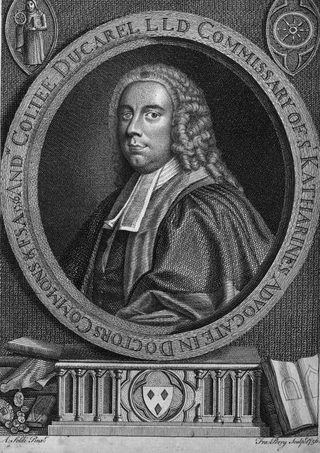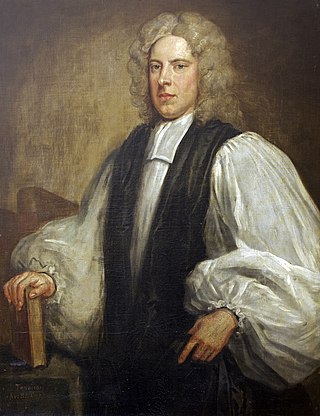Related Research Articles

Thomas Secker was the Archbishop of Canterbury in the Church of England.

Reculver is a village and coastal resort about 3 miles (5 km) east of Herne Bay on the north coast of Kent in south-east England. It is in the ward of the same name, in the City of Canterbury district of Kent.

Granville Leveson-Gower, 1st Marquess of Stafford, KG PC, known as Viscount Trentham from 1746 to 1754 and as The Earl Gower from 1754 to 1786, was a British politician from the Leveson-Gower family.

Thomas Herring was Archbishop of Canterbury from 1747 to 1757.

Hoath is a semi-rural village and civil parish in the City of Canterbury local government district. The hamlets of Knaves Ash, Maypole, Ford, Old Tree, Shelvingford and Stoney Acre are included in the parish.

Herne is a village in South East England, divided by the Thanet Way from the seaside resort of Herne Bay. Administratively it is in the civil parish of Herne and Broomfield in Kent. Between Herne and Broomfield is the former hamlet of Hunters Forstal. Herne Common lies to the south on the A291 road.

Thomas Brudenell-Bruce, 1st Earl of Ailesbury, KT, styled The Honourable Thomas Brudenell until 1747 and known as The Lord Bruce of Tottenham between 1747 and 1776, was a British courtier.
William Duncombe was a British author and playwright.

Andrew Coltée Ducarel, was an English antiquary, librarian, and archivist. He was also a lawyer practising civil law, and a member of the College of Civilians.
John Carpenter, served as the Roman Catholic archbishop of Dublin from 1770 until death in 1786.
Susanna Duncombe was an English poet and artist.

Edward Tenison (1673–1735) was an English bishop of Ossory. An example of the workings of the system of patronage in the Church of England, Tenison also was a significant Whig and controversialist.

All Saints' Church, Shuart, in the north-west of the Isle of Thanet, Kent, in the south-east of England, was established in the Anglo-Saxon period as a chapel of ease for the parish of St Mary's Church, Reculver, which was centred on the north-eastern corner of mainland Kent, adjacent to the island. The Isle of Thanet was then separated from the mainland by the sea, which formed a strait known as the Wantsum Channel. The last church on the site was demolished by the early 17th century, and there is nothing remaining above ground to show that a church once stood there.

St Mary's Church, Reculver, was founded in the 7th century as either a minster or a monastery on the site of a Roman fort at Reculver, which was then at the north-eastern extremity of Kent in south-eastern England. In 669, the site of the fort was given for this purpose by King Ecgberht of Kent to a priest named Bassa, beginning a connection with Kentish kings that led to King Eadberht II of Kent being buried there in the 760s, and the church becoming very wealthy by the beginning of the 9th century. From the early 9th century to the 11th the church was treated as essentially a piece of property, with control passing between kings of Mercia, Wessex and England and the archbishops of Canterbury. Viking attacks may have extinguished the church's religious community in the 9th century, although an early 11th-century record indicates that the church was then in the hands of a dean accompanied by monks. By the time of Domesday Book, completed in 1086, St Mary's was serving as a parish church.
Mehetabel Wesley Wright was an English poet. She was a member of the influential religious Wesley family.
Ford Palace was a residence of the Archbishops of Canterbury at Ford, about 6.6 miles (10.6 km) north-east of Canterbury and 2.6 miles (4.2 km) south-east of Herne Bay, in the parish of Hoath in the county of Kent in south-eastern England. The earliest structural evidence for the palace dates it to about 1300, and the earliest written references to it date to the 14th century. However, its site may have been in use for similar purposes since the Anglo-Saxon period, and it may have been the earliest such residence outside Canterbury.

John Duncombe (1729-1786) published his "canon-forming" celebration of British women writers as The Feminiad in 1754, though the title was revised as The Feminead in the second, 1757 edition.
References
- ↑ "Duncombe, John (DNCM745J)". A Cambridge Alumni Database. University of Cambridge.
- 1 2 3 4 5 6 7 8 9 . Dictionary of National Biography . London: Smith, Elder & Co. 1885–1900.
- ↑ For a full list see Gentleman's Magazine, June 1786, pp. 451–2, and Biographia Britannica ed. Andrew Kippis, iv. 511.
- Cardwell, M. John (2008) [2004]. "Duncombe, John [pseud. Crito] (1729–1786)". Oxford Dictionary of National Biography (online ed.). Oxford University Press. doi:10.1093/ref:odnb/8237.(Subscription or UK public library membership required.)